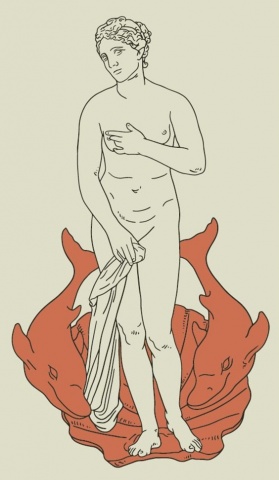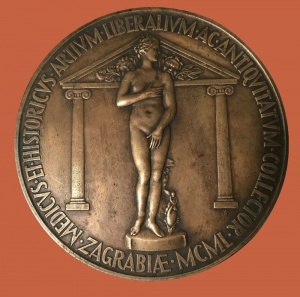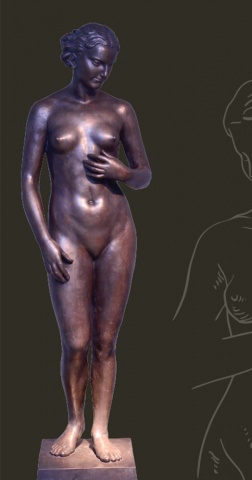Aphrodite / Venus - Seducer of Gazes
The sculptural oeuvre of Vladimir Štoviček (1896–1989) is characterised above all by relief works in the form of plaques and medals. He also produced commemorative and funerary sculpture and free-standing works. The human body was one of his main themes and he studied it in various poses and contortions. The rural environment in which he lived meant that he only rarely had the opportunity to work from live models. The introduction of myth into his formal expression was therefore an excuse for him to sculpt the naked female body.
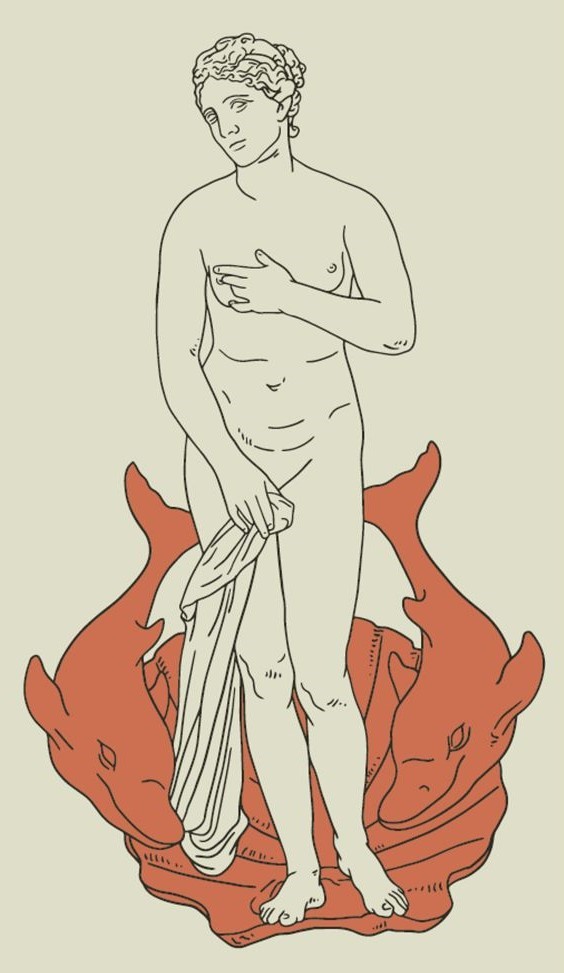
Interpretive Drawing of Venus depicted on the door knocker of the Belgramoni Tacco Palace in Koper.
Author: Gorazd Koščak
The female nude is one of the original themes of Greek sculpture, which celebrated the beauty of the naked female body. With its characteristic pudica¹ gesture, the Aphrodite of Knidos, a sculpture created in around 350 BC by Praxiteles, is a source and model for female nudes. Art historians have interpreted Aphrodite’s nakedness and pose in accordance with the spirit of their own age. Unlike the Greeks, who saw in the goddess’s nakedness a sign of strength and freedom, the inhabitants of the patriarchal Europe of the nineteenth and twentieth centuries justified her nudity on the grounds that she is on her way to bathe (and is shielding her pubic area with her hand to protect her modesty).
This iconographic motif is revisited by Štoviček in his Standing Female Nude (Venus) and his relief Venus Pudica. In the former work he depicted the goddess of beauty and love in a modified version of the classical type of the pudica gesture. She no longer covers her genitals but maintains her modesty and grace with the downward tilt of her head. In the relief, on the other hand, despite the covering of the intimate parts, the goddess’s self-confident pose is emphasised, with the veiling only making it more appealing to the viewer.
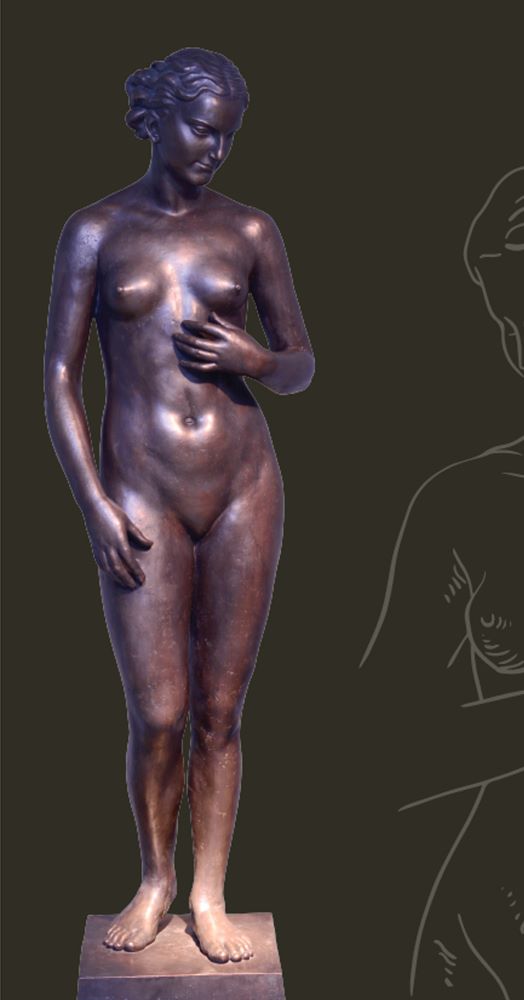
Vladimir Štoviček, Standing Female Nude (Venus), 1935.
Cast from the original, bronze, h. 170,7 cm, w. 52 cm, d. 45 cm, unsigned, inv. no. MMK; VŠ-1593.
Photo: Nina Sotelšek, Krško City Museum
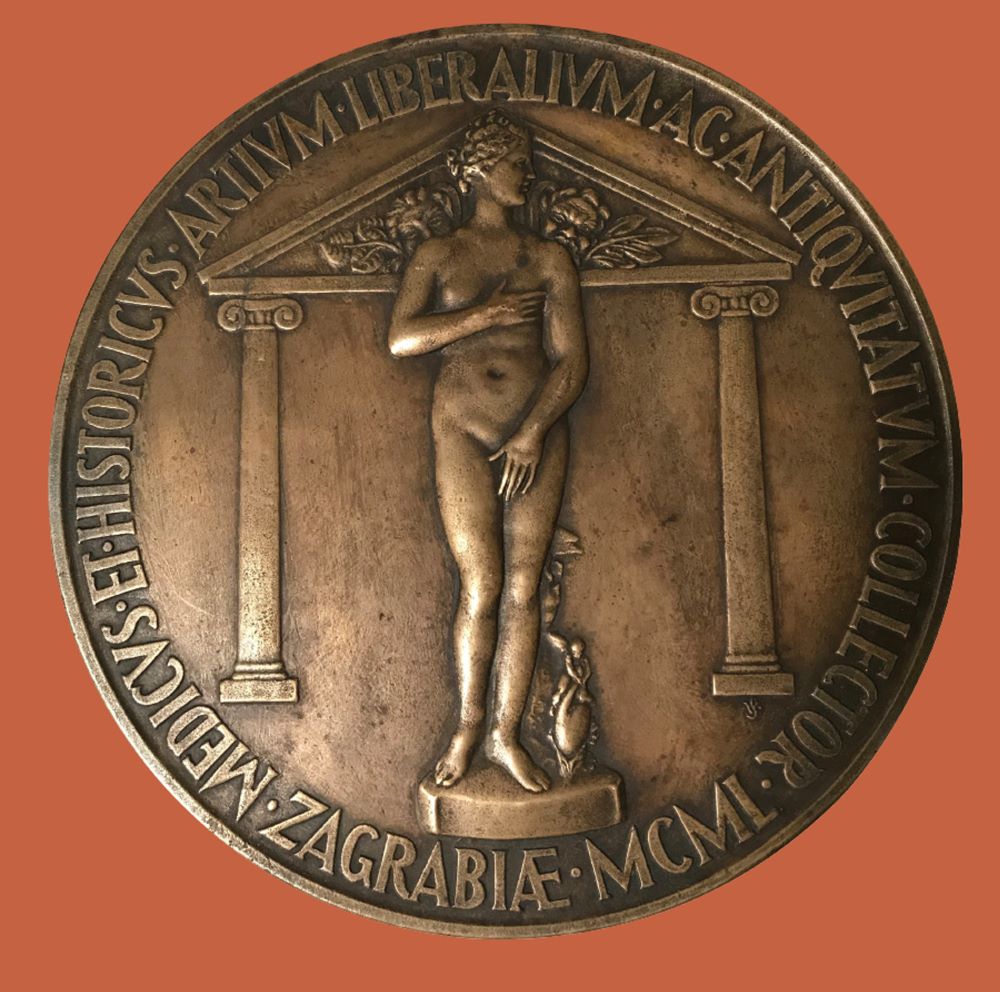
Vladimir Štoviček, Venus Pudica, 1950.
Positive relief plaque, bronze, r. 27.8 cm, d. 1.4 cm, signed bottom right “VS.”, inv. no. MMK: VŠ-1576.
Photo: Nina Sotelšek, Krško City Museum
¹ The standing figure is depicted in contrapposto, with the left hand covering the genitals. The head and gaze are turned to the left. Two Roman variants, in which the goddess covers her breasts with her right hand, are the Venere de’ Medici and the Capitoline Venus.
Klaudija Cigole
Mestni muzej Krško
Image Gallery and Catalogue of Museum Objects
